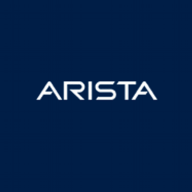


Check Point Harmony SASE and Arista Edge Threat Management NG Firewall are competing products in network security. Check Point Harmony SASE has advantages in pricing and support according to user reviews, while Arista Edge Threat Management NG Firewall stands out in features and is perceived by users as worth the investment.
Features: Check Point Harmony SASE is highly praised for its easy-to-use management console, seamless integration with cloud services, and advanced VPN capabilities. Arista Edge Threat Management NG Firewall stands out with robust threat management, detailed reporting, and extensive policy customization.
Room for Improvement: Users suggest that Check Point Harmony SASE could benefit from enhanced reporting features, more granular policy controls, and easier troubleshooting. Meanwhile, Arista Edge Threat Management NG Firewall's users recommend improvements in the learning curve for new users, more streamlined updates, and better user documentation.
Ease of Deployment and Customer Service: Check Point Harmony SASE is frequently praised for its straightforward deployment process and responsive customer support. Arista Edge Threat Management NG Firewall also receives high marks for deployment but has slightly more mixed feedback regarding customer support responsiveness.
Pricing and ROI: Check Point Harmony SASE is generally seen as cost-effective with a quick ROI. Comparatively, Arista Edge Threat Management NG Firewall is perceived as more expensive, but users feel the advanced features justify the cost.
| Product | Market Share (%) |
|---|---|
| Fortinet FortiGate | 20.4% |
| Check Point Harmony SASE (formerly Perimeter 81) | 0.2% |
| Arista Edge Threat Management NG Firewall | 0.1% |
| Other | 79.3% |



| Company Size | Count |
|---|---|
| Small Business | 350 |
| Midsize Enterprise | 130 |
| Large Enterprise | 187 |
| Company Size | Count |
|---|---|
| Small Business | 53 |
| Midsize Enterprise | 18 |
| Large Enterprise | 15 |
Fortinet FortiGate excels in providing integrated VPN, firewalling, and Unified Threat Management (UTM) with centralized management and high availability. It supports remote access and comprehensive threat protection, making it a preferred choice for securing networks.
Fortinet FortiGate offers a robust security platform with features such as strong intrusion prevention, application control, and web filtering. Its integration with Active Directory and SD-WAN functionality provides scalable solutions for large networks. Users appreciate its ease of use through centralized management interfaces, ensuring robust security with flexible configurations. However, FortiGate could enhance its graphical interface and technical support responsiveness, address firmware bugs and costly licensing, improve logging, integrate better with third-party tools, and strengthen scalability and memory for log storage. Complexity in configuration and the need for intuitive features are noted challenges, and there's a demand for advanced security, zero-trust capabilities, and AI integration.
What are the key features of Fortinet FortiGate?Fortinet FortiGate is widely implemented across industries like education, finance, and government. Companies use it for firewall protection, VPN, and SD-WAN capabilities, ensuring secure perimeter and data center security. It facilitates remote access management and traffic routing optimization, offering reliable security and connectivity solutions.
Arista Edge Threat Management NG Firewall enhances network security by managing threats, providing VPN connectivity, and monitoring network traffic. It simplifies network management and ensures compliance with policies, offering features like load balancing and network reliability.
Arista Edge Threat Management NG Firewall is known for its robust security, straightforward deployment, and extensive features. It boasts reliable threat detection, flexible policy management, and scalability, catering to different network sizes. Users appreciate the streamlined management console, consistent performance in threat mitigation, and content filtering capabilities. However, customer support response time needs improvement, and software updates sometimes cause issues. The solution has a steep learning curve and requires more intuitive setup processes. Users find the troubleshooting documentation unclear and the reporting features limited, desiring more comprehensive and customizable options.
What are the key features?
What are the benefits and ROI?
Arista Edge Threat Management NG Firewall is widely adopted in industries requiring stringent network security and efficient management, including finance, healthcare, and education. Organizations use it for load balancing, ensuring network reliability, and maintaining compliance with strict security standards. Its ability to manage policies and scale according to different network sizes makes it a versatile tool for businesses with complex security demands.
Check Point Harmony SASE, formerly Perimeter 81, offers robust security features like split tunneling, MFA, and Zero Trust Network Access focused on secure remote access and optimized connectivity for remote teams.
Check Point Harmony SASE delivers advanced security through a user-friendly interface, efficient VPN connections, and a centralized management console. It enhances security with real-time threat intelligence from ThreatCloud and traffic management via built-in optimization. Firewall as a Service and Secure Web Gateway safeguard against unauthorized access and phishing. While users seek enhanced networking customizations and better integration with identity providers, there's an emphasis on improving reporting, real-time analytics, and policy management. Requests also include a Chrome extension, traffic balancing, and simplified configuration to address some resource-intensive aspects.
What are the key features of Check Point Harmony SASE?
How can organizations benefit from using Check Point Harmony SASE?
Check Point Harmony SASE is used across industries for secure remote access and connectivity, protecting sensitive data, and managing access to corporate resources. It is ideal for those with hybrid cloud models and requires comprehensive security measures combined with existing IT infrastructures to meet specific industry demands.
We monitor all Firewalls reviews to prevent fraudulent reviews and keep review quality high. We do not post reviews by company employees or direct competitors. We validate each review for authenticity via cross-reference with LinkedIn, and personal follow-up with the reviewer when necessary.